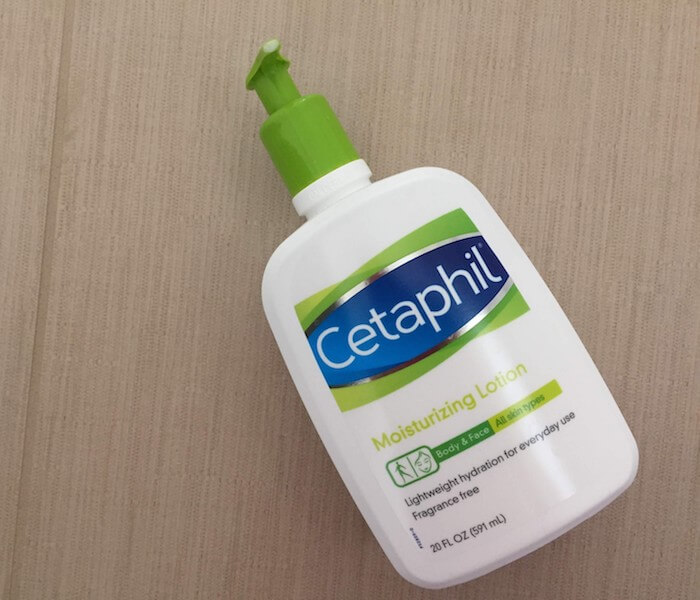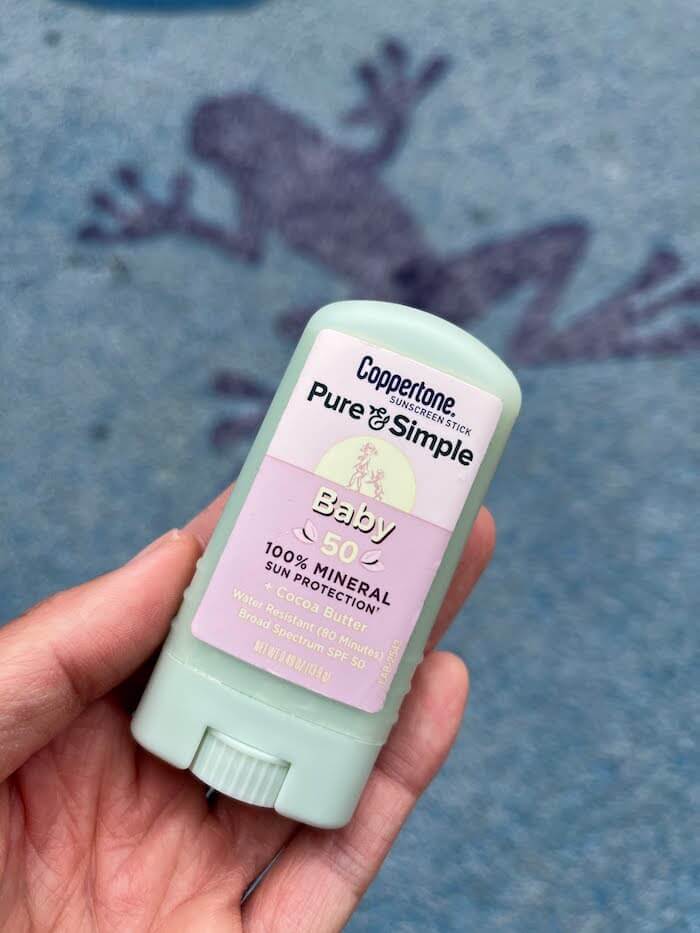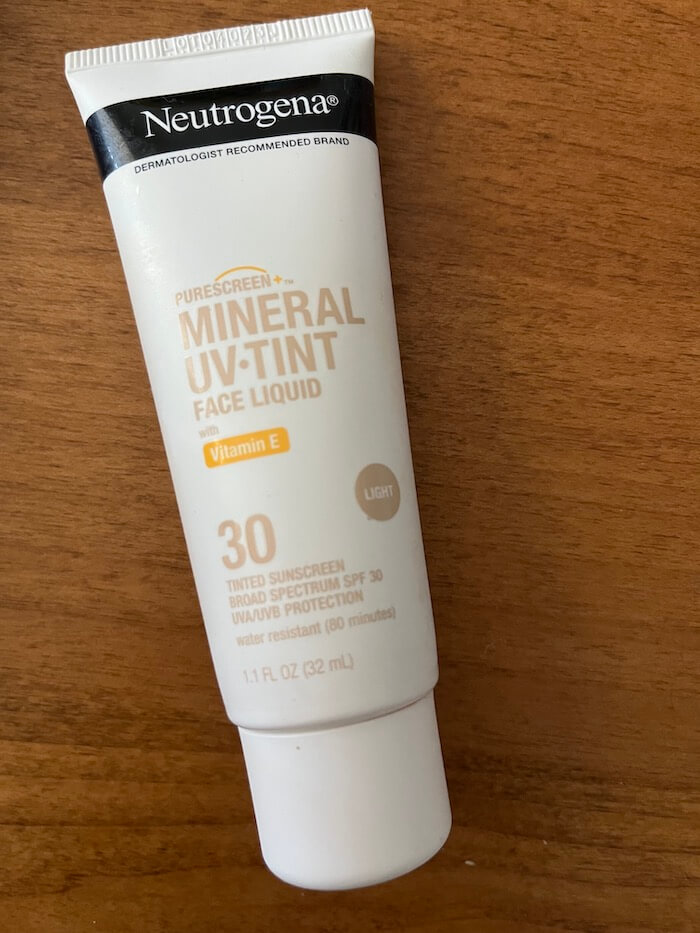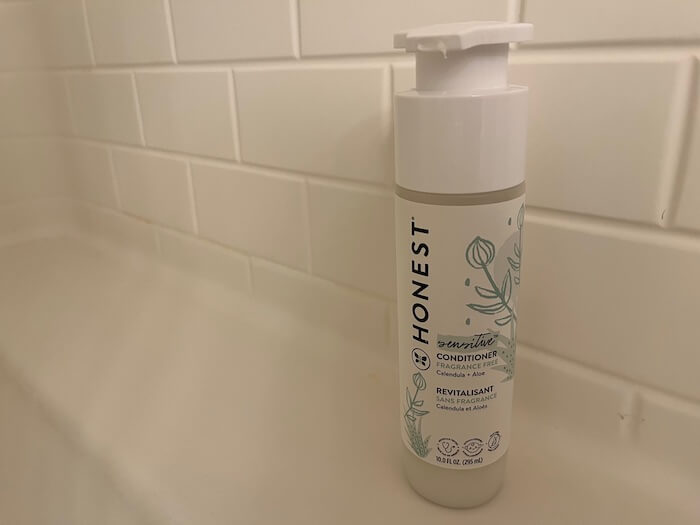Cetaphil Moisturizing Lotion Review: A rich but non-comedogenic, non-irritating moisturizer
This non-comedogenic moisturizer is richer and thicker than CeraVe Daily Moisturizing Lotion, but less thick than a cream—a great option for dry climates.
Everyone in my family has dry, sensitive skin (either eczema or psoriasis all around), so we always need a bottle of lotion in every room. Recently, my parents have gotten really into Cetaphil Moisturizing Lotion. Last time I visited them, this was the brand that was in every room of the house. Anyway, I was drawn to the minimalist packaging and the words “non-comedogenic” made me wonder if I could use it as a facial moisturizer. Lo and behold, I could—and I did. I even brought it with me to Vegas, which is the ultimate place to test a product’s ability to moisturize dry skin. My skin always starts cracking, getting itchy/flaky if I’m not careful about moisturizing religiously while I’m in there.

Cetaphil Moisturizing Lotion did a decent job of moisturizing my face while I was in Vegas, and was noticeably oilier/richer than the no-fuss drugstore moisturizing lotion I normally use at home (CeraVe Daily Moisturizing Lotion).
In this review, we’ll take a closer look at the ingredients in Cetaphil Moisturizing Lotion, and I’ll share my impressions of it as a facial moisturizer. Then we’ll compare it to CeraVe Daily Moisturizing Lotion, based on ingredients and texture, and try to determine which option may be better for you, based on your skin type.
Cetaphil Moisturizing Lotion ingredients
The ingredients in Cetaphil Moisturizing Lotion are pretty short and sweet. No fragrance to be found here (yay!). The formula contains a few really moisturizing ingredients, including glycerin, hydrogenated polyisobutene, fatty alcohols like ceteareth-20, cetearyl alcohol, stearyl alcohol, and stearoxytrimethylsilane. The last ingredient, acrylates/c10-30 alkyl acrylate crosspolymer, is also included in hair products like American Crew Fiber. If you read that review you remember that my dad mentioned that this ingredient helps thicken the formula. This helps explain why it feels thicker than CeraVe Daily Moisturizing Lotion.
CeraVe Daily Moisturizing Lotion ingredients
Cetaphil Moisturizing Lotion vs. CeraVe Daily Moisturizing Lotion: What they have in common
What these lotions have in common:
- glycerin as a primary moisturizing ingredient (in both products, it’s listed second in the ingredients list)
- contain fatty alcohols like cetearyl alcohol (in both). Cetaphil also contains stearyl alcohol and stearoxytrimethylsilane
- dimethicone
- both are listed as non-comedogenic
- both are fragrance-free
Cetaphil Moisturizing Lotion vs. CeraVe Daily Moisturizing Lotion differences
Preservatives
Now let’s get into the differences between these two lotions. They use different kinds of preservatives. CeraVe Daily Moisturizing Lotion uses parabens and disodium EDTA, while Cetaphil opts for benzyl alcohol, sodium levulinate, sodium anisate, caprylyl glycol (a skin conditioning ingredient that also enhances preservatives' antimicrobial effects),
Expensive moisturizing ingredients
However, CeraVe Daily Moisturizing Lotion contains a few other goodies like ceramides and hyaluronic acid. These ingredients tend to be pricey, which may explain why CeraVe costs more than Cetaphil.
Texture
You can also tell the difference between these two lotions by looking at the way each lotion pumps out. Cetaphil’s will pump out in a sort mound, while CeraVe’s will form more of a pool.
This last point explains why, if you have oily skin like me, and you don’t live in a dry climate, CeraVe Daily Moisturizing Lotion is probably the better option for you.
If you live in a dry climate, and you have medium-dry, sensitive skin, CeraVe Daily Moisturizing Lotion is a really affordable, no-fuss option that’s available at practically any drugstore. It may still not be quite as moisturizing as a cream, though, so it’s probably still best for people with oily skin who live in dry climates. You can read more of my general impressions of it below.
If you have dry skin and you live in a dry climate, you might need a moisturizing cream instead—if so, check out this comparison of CeraVe vs. Cetaphil Moisturizing Cream.
Cetaphil Moisturizing Lotion review
CeraVe Daily Moisturizing Lotion is a great basic moisturizer that kept my skin happy even when I was in dry Las Vegas a few weeks ago. I think the main difference between this and CeraVe Daily Moisturizing Lotion is that CeraVe’s formula is less rich, and leaves your skin feeling less oily/tacky afterward. Cetaphil Moisturizing Lotion is slightly more rich, which makes it a suitable option for drier climates. But in New York, where I usually live, I think it’s too oily for my oily skin. I prefer using CeraVe Daily Moisturizing Lotion here at home, because Cetaphil would leave my skin feeling a tad too oily (not bad for overnight wear, but probably too much shine for the daytime).
Even though Cetaphil Moisturizing Lotion left my skin feeling a bit oily and slick afterward, it still didn’t break me out as long (but I was careful to stick to my habit of applying a thin layer of Differin over it every night). I recommend trying it out if you feel like using something that’s less rich than a cream (plus, gotta love that hygienic pump!), and more rich than a “runnier” lotion.




Share this post
RSS
Facebook
Reddit
Email